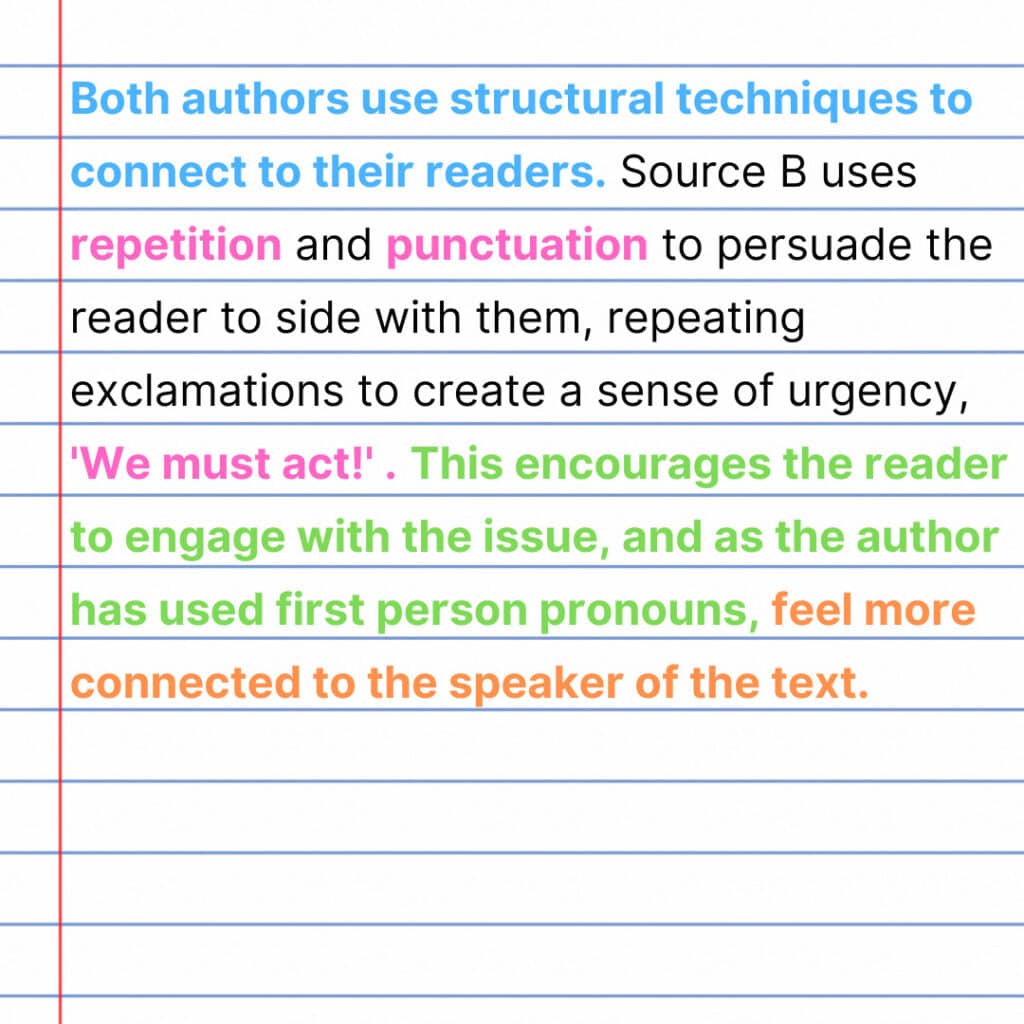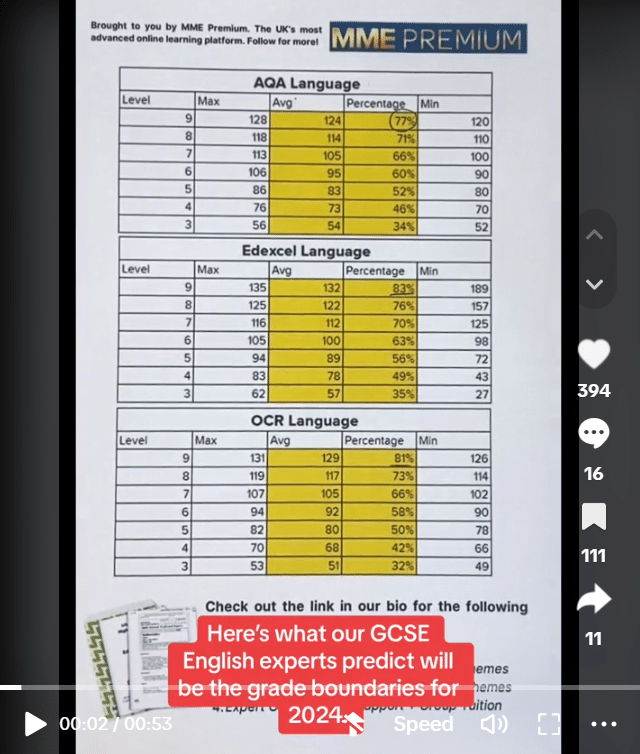Reading Non-Fiction: Crafting Your Answers
Reading Non-Fiction: Crafting Your Answers Revision
Crafting Your Answer
While different exam boards have an individual question style, all of them will ask you to analyse a variety of sources in a particular way.
Each exam board also uses the same Assessment Objectives provided by the government as the basis for examinations, so they will ask you to demonstrate the same skills, but in similar ways.
Usually questions that are assessed based on AO1 and AO2 will be shorter, and questions which require you to demonstrate skills related to AO3 will require you to include more detail.
How to Plan Your Answer
There are several steps you should take when you are first planning your answer:
1. The first step you should take is to break the question down into its key parts, and think about which source it is asking you to look at.
2. You should then consider whether the question is giving you specific instructions, for example, to ‘compare’ or ‘summarise’. These different specifications will require you to do different things with the text.
3. Next, ask yourself how many marks is the question worth? This can be useful to think about because it can give you an idea of how many points to make, and how much detail you are expected to give. Usually, questions testing AO1 and AO2 are shorter and questions testing AO3 are longer and require more planning time.
4. Once you have an idea of what the question is asking and how long your answer should be, do an initial read through and annotate the source. This process ensures key phrases or language and structural techniques are remembered. For more detail on how to annotate, check out our pages dedicated to annotation!
5. The next step in your planning process should be to make a mind map of your key points that you found through annotation, and put them into an order that makes sense.
This is how you can go about building an argument with an aim and flow. Some people prefer to use a bullet-pointed list to plan their response, but it’s all about finding what works best for you.
6. Which annotations could help you explain a point further or support an argument you have made?
Remember, while leaving 5 minutes to plan is important to help you get your ideas together, spending too much time in the planning stage will not leave you enough time to write your answer in detail.
The best approach is to try and find the balance!
Checking
Taking 5 minutes to check over your answer at the end of the exam can help you catch things that you may have missed, or small mistakes being made while writing.
Simple things like checking capital letters and grammar, as well as making sure your handwriting is clear, can make it easy for the examiner to give you marks because your meaning is clearer.
Ensure you have met the specific requirements for the question in the Assessment Objectives.
Here are some ideas of things to check for in your answer based on the Assessment Objective that the question is testing.
Remember, usually AO1 and AO2 are assessed in earlier questions and AO3 is assessed in later questions.
AO1
- Have you included direct evidence from the text?
- Have you distinguished between the implicit or explicit information you are being asked to find?
AO2
- Have you outlined the effect of the language or structural technique on the reader?
- Have you used relevant subject terminology in your answer?
AO3
- Have you compared not only the idea or perspective of the author, but how they convey it?
- Have you individually analysed each source before bringing them together?
Structuring Your Answer
Structuring a shorter answer
The lower mark question in the non-fiction element of the AQA exam is a multiple choice question.
Therefore, it’s important to not spend too much time worrying about the structure of your answers, as you will run out of time for the longer ones, which require more explanation and evidence.
Structuring a longer answer
Having a structure for a longer answer is helpful in terms of ensuring your work has an aim and clear purpose.
You will probably already be familiar with the PEEL technique, and you can use this in questions that assesses AO3.
Let’s have a quick refresher…
P – Point- Summarise what your argument will be, the point you will make with your answer.
E – Evidence – Select concise and relevant quotes from the text to support this point.
E – Explain – Explain how and why the evidence is relevant, analyse it, and show the examiner you understand how it relates to the question.
L – Link – You can link your point back to either the question or the next paragraph.
Let’s look at an example extract using the PEEL paragraph method…

As you can see, the student has included a short and relevant quote as an example of the structural technique they spotted, and then analysed its effect on the reader.
Because AO3 is being assessed, it’s important to include comparative language, as the student has here through the use of ‘Both authors‘.
And finally, the last line links back to the question and shows a strong line of argument!

MME Premium Membership
£19.99
/monthLearn an entire GCSE course for maths, English and science on the most comprehensive online learning platform. With revision explainer videos & notes, practice questions, topic tests and full mock exams for each topic on every course, it’s easy to Learn and Revise with the MME Learning Portal.
Sign Up Now

